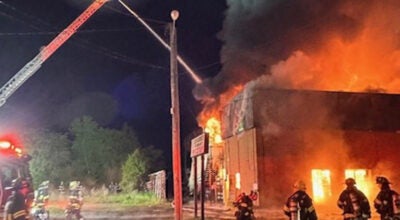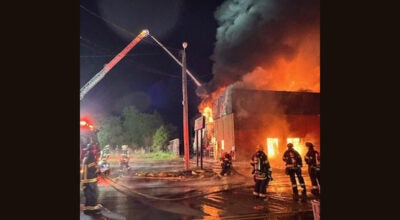Ephedrine-tracking questioned
Published 10:28 pm Monday, April 9, 2012
By Carten Cordell
Virginia Statehouse News
As law enforcement officials create a nationwide database aimed at crushing the methamphetamine trade, addicts are using a simple but dangerous method to create their drug of choice and evade police.
It’s called “shake-and-bake” or “one-pot” meth cooking. Combining ingredients from several household products with the ephedrine present in over-the-counter decongestants, a cook can make a single hit of crystal meth in a 20-ounce plastic soda bottle.
While dangerous, the method is widespread, and, as experience from other states suggests, difficult to stop.
Last month, Gov. Bob McDonnell signed legislation making Virginia the 19th state on the National Precursor Log Exchange, a multistate database that tracks sales of over-the-counter cold and allergy medications containing ephedrine. Virginia goes live in January.
The tracking system, which is financed by the Consumer Healthcare Products Association, a trade association for a number of pharmaceutical interests, seeks to curb the illicit use of ephedrine by monitoring purchases of cold and allergy medications, and alerting pharmacies when consumers reach legal limits.
Several law enforcement officials question the effectiveness of NPLEx. Evidence from other states suggests it could create a new black market in over-the-counter medications. The system also has raised public concerns about privacy and the criminalization of innocent consumers.
“The database has no effect on meth labs,” said Jason Grellner, president of the Missouri Narcotics Officers Association and commander of the Franklin County Narcotics Task Force. “It’s sold to legislators as a way to help law enforcement, to cut meth labs and to continue to have access for those who need (the medication) the most. It’s all a lie. What it really is is a way for the pharmaceutical industry to continue to make $1 billion a year to continue to sell their product.”
The shake-and-bake method fosters such doubts.
According to federal Drug Enforcement Agency reports, Missouri led the nation in meth lab busts in 2011, logging more than 2,000 incidents. Grellner said that despite its billing, NPLEx was rarely useful.
“The only thing the database does is give you a possible list of suspects,” he said. “A meth lab occurs, and there are six people there. In the old days, we would have to sit them all down, break down their stories and come up with who did it. Now we can go to the database and say, ‘OK, who of you fools has been purchasing pseudoephedrine?’”
Grellner said Missouri law enforcement officials turned to the NPLEx system in just 24 percent of last year’s cases, and then only after the bust. “Only 4 percent of the time was the NPLEx database used before the lab was located,” he said.
NPLEx logs buyers’ information when the drugs are purchased. Meth producers have beaten the system by acquiring ephedrine through smaller purchases, creating a lucrative black-market business.
“Here in Missouri, pseudoephedrine is no longer a commodity,” Grellner said. “It’s currency.”
A recent case led to the indictment of 10 people in St. Louis, one of whom admitted that “in 24 months’ time, he moved 10,000 boxes of pseudoephedrine from inner-city St. Louis to eight meth lab operators in two counties in Missouri,” Grellner said. Neither his name nor the names of the eight operators ever showed up in the NPLEx system.
The suspect circumvented NPLEx by offering strangers $20 to buy pseudoephedrine products, Grellner said. He then sold the products to meth cooks for $50 to $100 a box. Since no one was buying over the legal limit and several people were involved in the conspiracy, NPLEx never flagged the operation.
NPLEx has its supporters.
“I don’t think it is going to make anything harder at all,” said Don Payton, coordinator of the Clandestine Lab Program in Illinois. “I think, if anything, it is going to make things easier, because it is going to start limiting what people can buy. Indiana just came online, so when their folks come to Illinois, they are going to be limited and vice versa. So they are not going to be able to hop back and forth between the states.
“In some states, it may not be the answer for them, but it is better than having nothing. We have to do something.”
Grellner, the Missouri official, said shake-and-bake operations are tailor made to evade tracking systems like NPLEx, despite the alerts the system sends out when people approach their legal limit of ephedrine buys.
“Stop-sales systems like (NPLEx) lend themselves to the shake-and-bake method,” he said. “What you see is individuals getting small amounts — a box to maybe three boxes — and being able to manufacture methamphetamine in a 2-liter bottle or as small as a 20-ounce soda bottle.“
Grellner has an idea that terrifies the pharmaceutical industry — prescriptions. Grellner says prescriptions are the only sure way to stop the use of cold and allergy meds in methamphetamine.
Another method of prevention could come from the pharmaceutical world itself. St. Louis-based Highland Pharmaceuticals has developed a pseudoephedrine formulation called Tarex that renders the drug useless when meth extraction is attempted.
Grellner said that if the industry begins using Tarex, meth production could be severely crippled.
“It’s the answer to our prayers,” he said. “You still have access to pseudoephedrine by consumers and patients, yet it cannot be turned into methamphetamine. We are still being fought by the industry, even with this product because they don’t want to lose a billion dollars year.”






